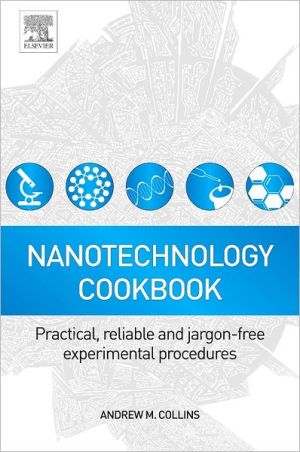

 |

|

Sold Out
Book Categories |
Login|Complaints|Blog|Games|Digital Media|Souls|Obituary|Contact Us|FAQ
CAN'T FIND WHAT YOU'RE LOOKING FOR? CLICK HERE!!! X
 You must be logged in to add to WishlistX
 This item is in your Wish ListX
 This item is in your CollectionNanotechnology Cookbook: Practical, Reliable and Jargon-free Experimental Procedures
X
 This Item is in Your InventoryNanotechnology Cookbook: Practical, Reliable and Jargon-free Experimental Procedures
X
 You must be logged in to review the productsX
 X
 X

Add Nanotechnology Cookbook: Practical, Reliable and Jargon-free Experimental Procedures, The peculiarities of materials at the nanoscale demand an interdisciplinary approach which can be difficult for students and researchers who are trained predominantly in a single field. A chemist might not have experience at working with cell cultures or , Nanotechnology Cookbook: Practical, Reliable and Jargon-free Experimental Procedures to the inventory that you are selling on WonderClubX
 X

Add Nanotechnology Cookbook: Practical, Reliable and Jargon-free Experimental Procedures, The peculiarities of materials at the nanoscale demand an interdisciplinary approach which can be difficult for students and researchers who are trained predominantly in a single field. A chemist might not have experience at working with cell cultures or , Nanotechnology Cookbook: Practical, Reliable and Jargon-free Experimental Procedures to your collection on WonderClub |